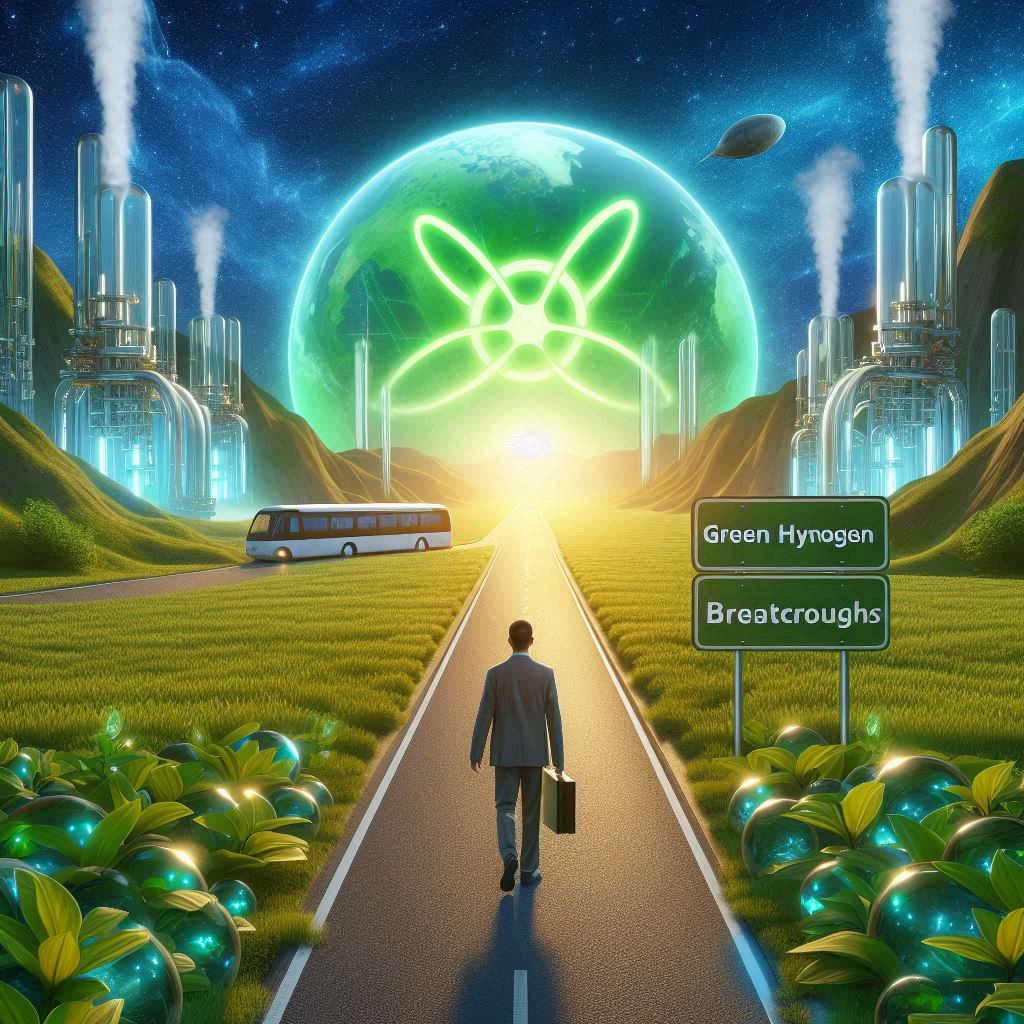Green Hydrogen Breakthroughs: A Path to Net-Zero
Introduction
As the world races toward a net-zero future, the search for clean, sustainable energy sources has never been more urgent. Green hydrogen is emerging as a game-changing solution, offering a zero-emission alternative to fossil fuels for industries, transportation, and power generation. With recent breakthroughs in production, storage, and distribution, green hydrogen is poised to play a crucial role in global decarbonization efforts.
What is Green Hydrogen?
Hydrogen is the most abundant element in the universe, but it does not exist in its pure form naturally. Green hydrogen is produced using electrolysis, where water is split into hydrogen and oxygen using electricity generated from renewable energy sources like solar and wind. This process ensures zero carbon emissions, making it a sustainable alternative to grey or blue hydrogen, which relies on fossil fuels.
Key Breakthroughs in Green Hydrogen Technology
1. Advancements in Electrolyzer Efficiency
- Next-generation electrolyzers are becoming more efficient, reducing the electricity required for hydrogen production.
- Innovations such as solid oxide and anion exchange membrane (AEM) electrolyzers are driving down costs and improving scalability.
2. Scaling Up Production Capacity
- Governments and private companies are investing in large-scale hydrogen plants to make production more economical.
- Gigawatt-scale projects are being developed in Europe, Australia, and the Middle East to meet growing energy demands.
3. Hydrogen Storage and Transportation Improvements
- New methods like liquid organic hydrogen carriers (LOHCs) and compressed hydrogen storage are making hydrogen safer and more practical for long-distance transport.
- Hydrogen pipelines and ammonia-based transport are being explored as viable solutions for global distribution.
4. Integration with Renewable Energy Sources
- Green hydrogen can be used for energy storage, balancing intermittent renewables like solar and wind.
- Surplus electricity from renewables can be converted into hydrogen, ensuring a stable and reliable power supply.
5. Industrial and Transportation Applications
- Green hydrogen is being adopted in heavy industries such as steel and cement manufacturing, reducing reliance on coal and natural gas.
- Hydrogen-powered vehicles, trains, and aircraft are gaining traction as zero-emission transportation solutions.
Global Adoption and Policy Support
- The European Union, United States, and China have set ambitious hydrogen strategies, investing billions into research and infrastructure.
- Tax incentives, subsidies, and carbon pricing are making green hydrogen more competitive against fossil fuels.
- Public-private partnerships are accelerating the deployment of hydrogen hubs for industrial and transportation use.
Challenges and Future Prospects
Despite its potential, green hydrogen faces challenges such as:
- High production costs compared to fossil fuels.
- Infrastructure limitations, including storage and transport.
- Energy losses during conversion and distribution.
However, continuous technological improvements and economies of scale are expected to drive down costs, making green hydrogen a mainstream energy source by 2030.
Conclusion
Green hydrogen represents a transformative shift toward a sustainable energy future. As breakthroughs in production, storage, and application continue to evolve, it is set to become a cornerstone of global decarbonization. With the right investments and policies, green hydrogen will play a pivotal role in achieving a net-zero world.
